
In the Estocolmo neighborhood in Santa Cruz, Isabel Ortiz cleaned her house’s floor with ease on Tuesday morning, October 13. A large portion of her furniture was perched on metal structures with wooden platforms that she paid to build three years ago so she can lift everything in her house, absolutely everything, up to a height that the water cannot reach.
With the rains during the last few days, the neighborhood is on alert, knowing that the river could overflow soon. “I have already been preparing,” said Isabel, pointing out the structures. They have been lucky that it hasn’t happened yet, but Isabel has the warning bells on “like when you’re going to give birth, you have to have everything ready to run.” Running to put everything up high, even the refrigerator and the beds.
Estocolmo is a neighborhood just over a kilometer (less than a mile) from the center of Santa Cruz. It is encircled by the Enmedio River, which has a wide channel, about five or six meters (16 to 20 feet) wide. Each day, Isabel and her neighbors monitor how full it is to calculate when it will flood the houses in the neighborhood.
Since 1995, she said, it is constant, every rainy season, in this Santa Cruz community.
25 years ago, I came and built this house, and you know what? I wasn’t the first to move in. The river moved in first. Before that, they say it had never overflowed.”
This year’s rains put emergency response authorities in a dilemma: they must shelter the affected people in the midst of a pandemic that requires distancing, face masks, social bubbles, protocols…
The municipal emergency committees of Guanacaste assure people that they have the response route drawn up with shelters for people without COVID and with COVID planned for those affected by the floods, and they are in communication with local emergency committees. Some communities, however, feel that they will be running around blind when the rains hit them.
***
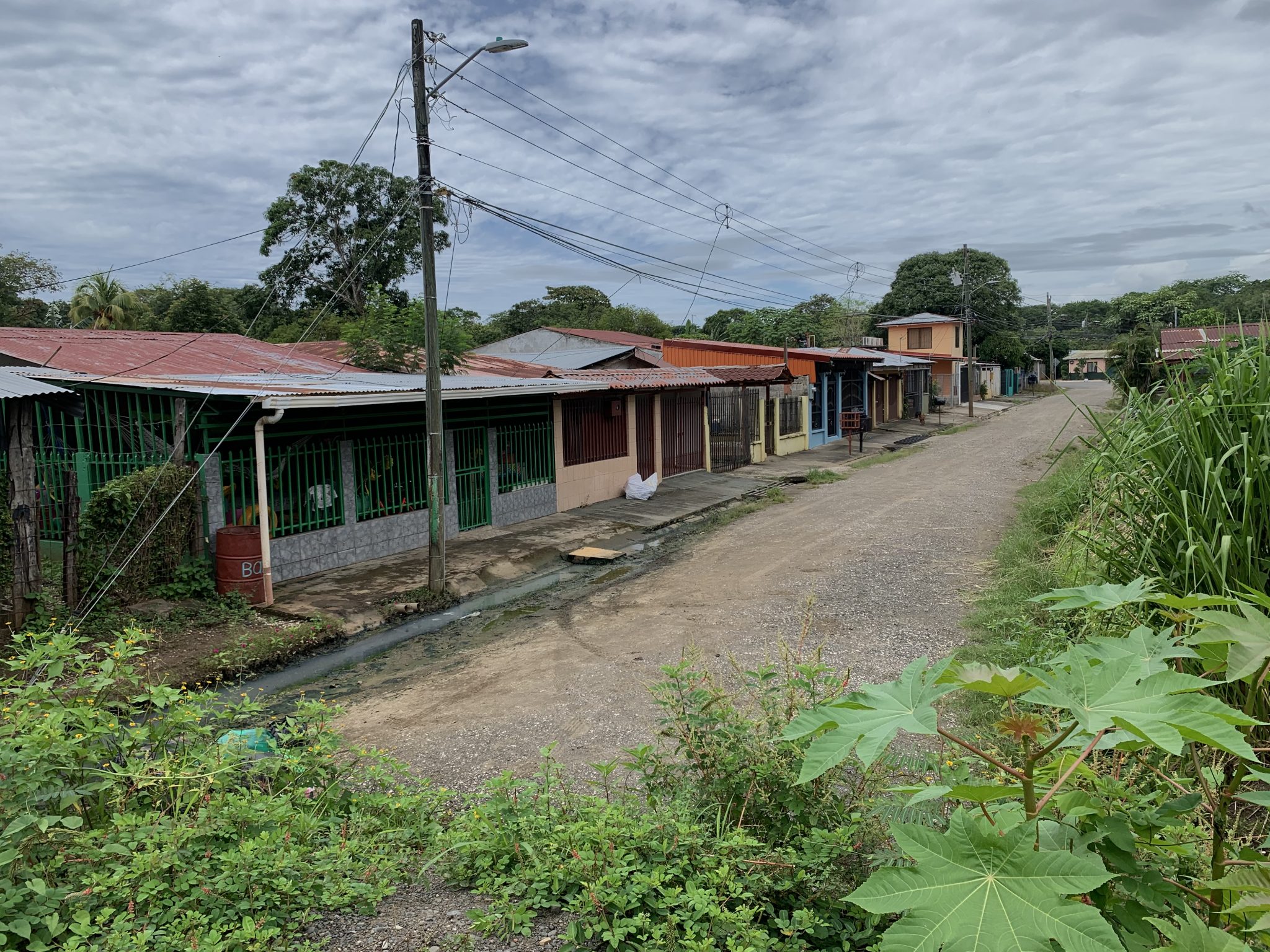
Neighbors of Barrio Estocolmo go out in the middle of the night to monitor the water level to figure out when they should start putting their belongings up. Photo: Noelia Esquivel Solano
Juan Diego Naranjo, meteorologist with the National Meteorological Institute (IMN-Instituto Meteorológico Nacional), explained that a “very rainy scenario” is expected in October. “First, because it is the rainy season; second, because October is the rainiest month of the season; and third, because the La Niña phenomenon amplifies it.”
We have been experiencing the La Niña phenomenon since the end of August, according to IMN records. That means that since then, the ocean temperature has been lower than average, which causes more downpours. In fact, the province registers a rainfall surplus of 5% above its historical level, according to Naranjo, and they estimate that it will still be raining at the end of November and some days in December.
Opening shelters is the constant every year to help communities mainly in Santa Cruz, but also in other towns such as Nosara in the canton of Nicoya, Cuajiniquil in La Cruz and Bebedero in Cañas.
This year, with the COVID-19 health crisis, the municipal emergency committees, coordinated by local governments and made up of institutions such as the Costa Rican Social Security Fund, firefighters, the Red Cross and the Ministry of Health, must keep an eye on not only how rivers and soils behave with the accumulation of water, but also the infections in each community.
The ministry knows where people who are in quarantine are located,” said Ministry of Health director for the Chorotega Region, Enrique Jimenez. “And if someone has to be evacuated, they are going to tell the Red Cross or let’s see, the fire department, that has to evacuate in a certain community.”
Inter-institutional coordination is the repeated answer that authorities give when asked how they work in responding to emergencies. That guarantees populations comprehensive, immediate, quick care, they affirm.
A regional advantage is that epidemiological tracing is at 96%, according to Jimenez. “We haven’t yet reached the saturation point for investigative services.” For this reason, the municipal emergency committees feel that they could quickly identify and transfer people with COVID-19 affected by natural disasters to the shelters that they set up for that population.
According to the National Emergency Commission (CNE-Comisión Nacional de Emergencias) protocol, each municipal committee should consider three types of shelters: COVID-positive people, people suspected of having COVID and people without COVID.
Bagaces has devised the opening of a shelter for suspected cases in the district of Mogote. However, in practice, most cantons’ committees have only planned two types, one for people without COVID and one for people with COVID. If there are suspected cases, they will look for a space inside one of the shelters to isolate them from the rest.
For example, the coordinators of the committees for Santa Cruz and Carrillo confirmed this. “If there is suspicion, we have a space in the hall to put them there while taking them to the COVID shelter is coordinated,” said the coordinator for Carrillo, Francisco Aleman.
He explained that people with COVID would be transferred to the school in Belen, although they are actively searching for another place due to complaints from neighbors. “We are evaluating the melon camps (shelters for people who go to cut sugarcane and melons). They have a dining room, bathroom and sanitary conditions,” Aleman specified.
In Santa Cruz, the Maria Leal School would shelter both suspected and positive cases, said Mauricio Zumbado, the coordinator of the Municipal Emergency Committee (CME-Comité Municipal de Emergencias) and advisor to the canton’s mayor.
The educational centers work very well as shelters due to the possibility of placing each family in their social bubble in the classrooms, agree Aleman and Vernon Rodriguez, the coordinator of environmental management for the Municipality of Bagaces. “Handling it in educational centers is preferred in a way that facilitates distancing measures. A more intimate and differential space is promoted,” said Rodriguez. Aleman, for his part, thinks that they are preferable because they have several bathrooms, sinks and even a kitchen.
Community halls, on the other hand, make it impossible to comply with distancing. “In the halls, we shelter people according to social bubbles, that they don’t scatter, but it is very difficult to have distances of two meters (6 feet). I’d be lying to you,” Aleman said. And the Ministry of Health’s regional director, Enrique Jimenez, agrees with him.
***
When Isabel Ortiz’s house is flooded in the Estocolmo neighborhood, she, her son, her daughter and her son-in-law go to the house of some relatives. She said she has never gone to a shelter, not because they would be treated badly, but because when staying at a relative’s home, she can constantly visit her own house to check if everything is there, “because thieves take advantage, you know,” she remarked.
Her neighbor, Adalberto Zuñiga, chooses the same path. “One is in that uneasiness of whether it’s going to rise or not rise. And if it overflows, you have to put your belongings up and go to the house of family or friends until the flooding passes.”
In the midst of the pandemic, both see the possibility of going to a shelter as even more remote. They don’t know what the plans are for opening shelters in the canton, but moving to one is not something they consider.
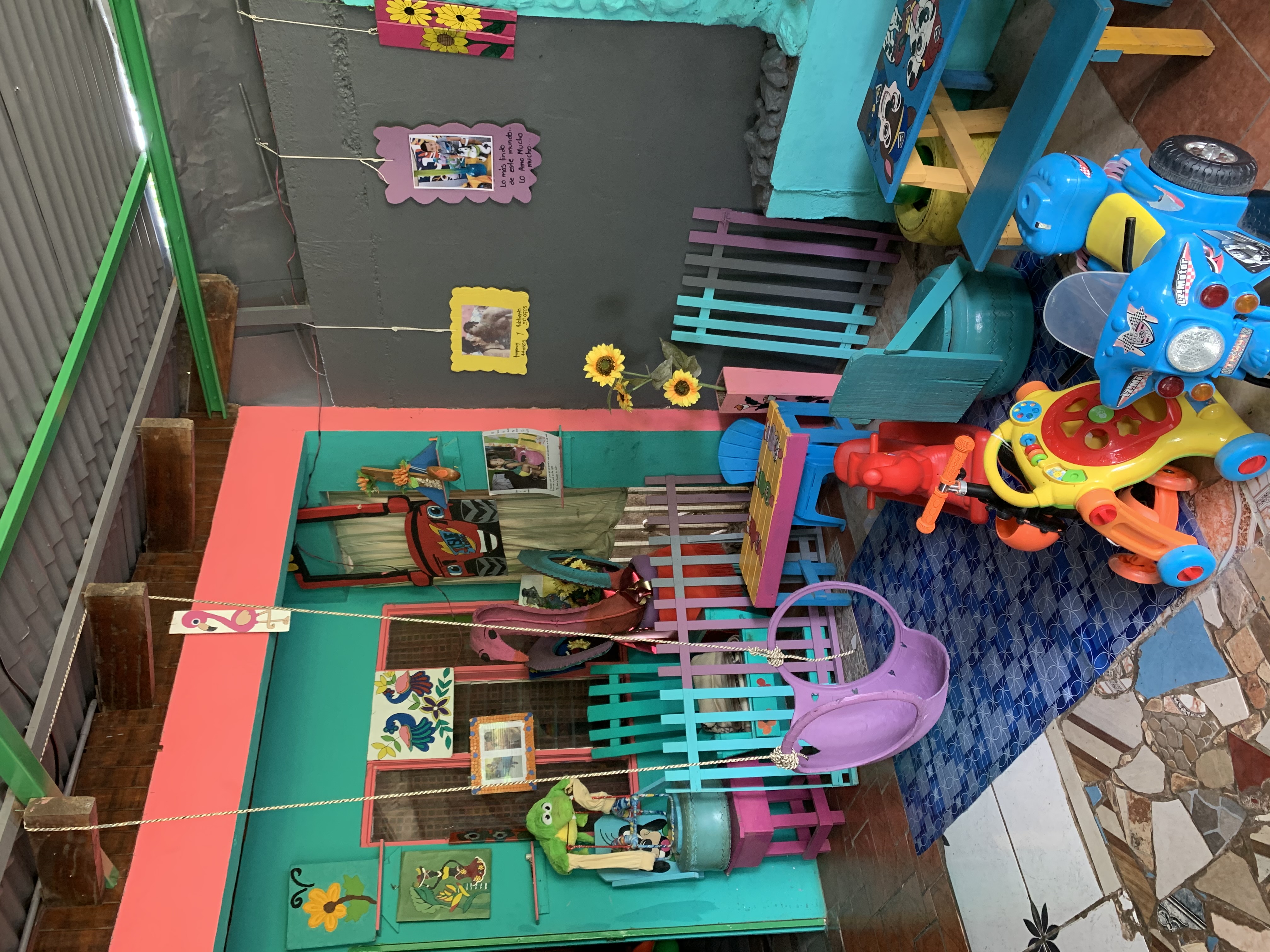
Adalberto Zuñiga’s house has dozens of his grandson’s toys. Even in the early mornings, Adalberto and his wife monitor the Enmedio riverbed in the Estocolmo neighborhood in Santa Cruz to figure out when they should start putting their belongings up in places where the water doesn’t reach. Photo: Noelia Esquivel Solano
According to the coordinator of Carrillo’s committee, Francisco Aleman, the same thing happens in his canton and he affirms that “house shelters,” as he calls them, are a good strategy to avoid filling the shelters. “People don’t come for fear of the pandemic, so we have promoted the idea that they shelter with relatives,” Aleman related. And he said that the previous week, they transferred three families from the Rio Cañas sector to other houses of family members.
Aleman does a detailed review of the centers that they would set up to shelter people. “In La Guinea, we have the multipurpose hall and the training hall and the school; in Corralillo, the multipurpose hall and the school; in Filadelfia, the community hall, school and the Church of God; in Belen, the community hall, the elementary school, which is the COVID shelter, and the high school; in Rio Cañas, the school; in Santa Ana, we have the school; in Palmira, the community hall and the school,” and his list continues like this. The coordinators of Bagaces and Santa Cruz also demonstrate that they have everything planned.
However, the president of the Estocolmo Development Association and also auditor of the local emergency committee, Manuel Ugarte, claims that the Santa Cruz CME doesn’t communicate or coordinate with them, with the communities. The main problem, from his point of view, is that the mayor’s office hasn’t sworn in the team, despite the fact that they have requested it in at least one letter sent since June.
Who else can be an allied bridge for when an emergency has to be attended to than a community emergency committee attached to the municipal committee?” Ugarte questions. “We should be the municipality’s right arm.”
The mayor’s advisor, Mauricio Zumbado, who has been coordinator of the Santa Cruz committee since September, said that the Estocolmo neighborhood committee is neither formed nor sworn in and that he is unaware of the letter sent. “We don’t have anything about that in the mayor’s office. I tell you that because I am the mayor’s advisor. Most documentation arrives through the channels by which it should arrive, and I don’t have it in my possession,” he said.
He also added that the inactivity of several local committees is one of the inconveniences they face. “We didn’t have experience [coordinating the committee], but at this moment, we are faced with several problems: many of the local emergency committees are not active,” he said, adding that they are restructuring and collecting data from the committees.
Both he and the municipality’s press manager, Francisco Mairena, acknowledge that it is also normal to coordinate actions with the development associations. “The majority is coordinated with development associations, but if not, there is a district committee or a local emergency committee that looks after food, mattresses, blankets,” said Mairena.
“We know that the associations are a little more integrated, but the essential thing is that there is a local emergency committee,” said Zumbado.
The president of the Rio Cañas association, Johanna Chaves, is also someone who complains about the lack of communication between community players and believes that the abrupt change of members on the municipal committee was detrimental to the comprehensive work that they did to attend to emergencies.

Neighbors of Barrio Estocolmo go out in the middle of the night to monitor the water level to figure out when they should start putting their belongings up. Photo: Noelia Esquivel Solano
“In the past atmospheric situation that we had, we were affected by the river. There were houses flooded, including mine. We had to stay at home because, although we had water inside the house, it was impossible to open a shelter because there was no clear coordination of whether or not it could be done. First they told us yes, then they told us no, that it wasn’t feasible to open a shelter in Rio Cañas. In the end, the situation ended and we had to solve it for ourselves because the commission was not present at any time,” she told The Voice of Guanacaste.
“The perception that we have as a development board is that the people who are currently in the positions make it difficult to have healthy communication, a healthy coordination to meet the needs of the people,” she added.
From the CME, Zumbado insisted that, despite the fact that they are beginning to coordinate with the no more than 10 officially-formed committees, he is not worried about attending to the emergency. “Not at all, I’m not worried. I have an excellent work team.”
Like him, the coordinators of other municipal committees reiterate their confidence in their plans, in their estimates, in their work routes. But some communities feel that they don’t know about the strategies. “Here it’s every man for himself,” said Isabel.
Maria Fernanda Cisneros collaborated in reporting this information.


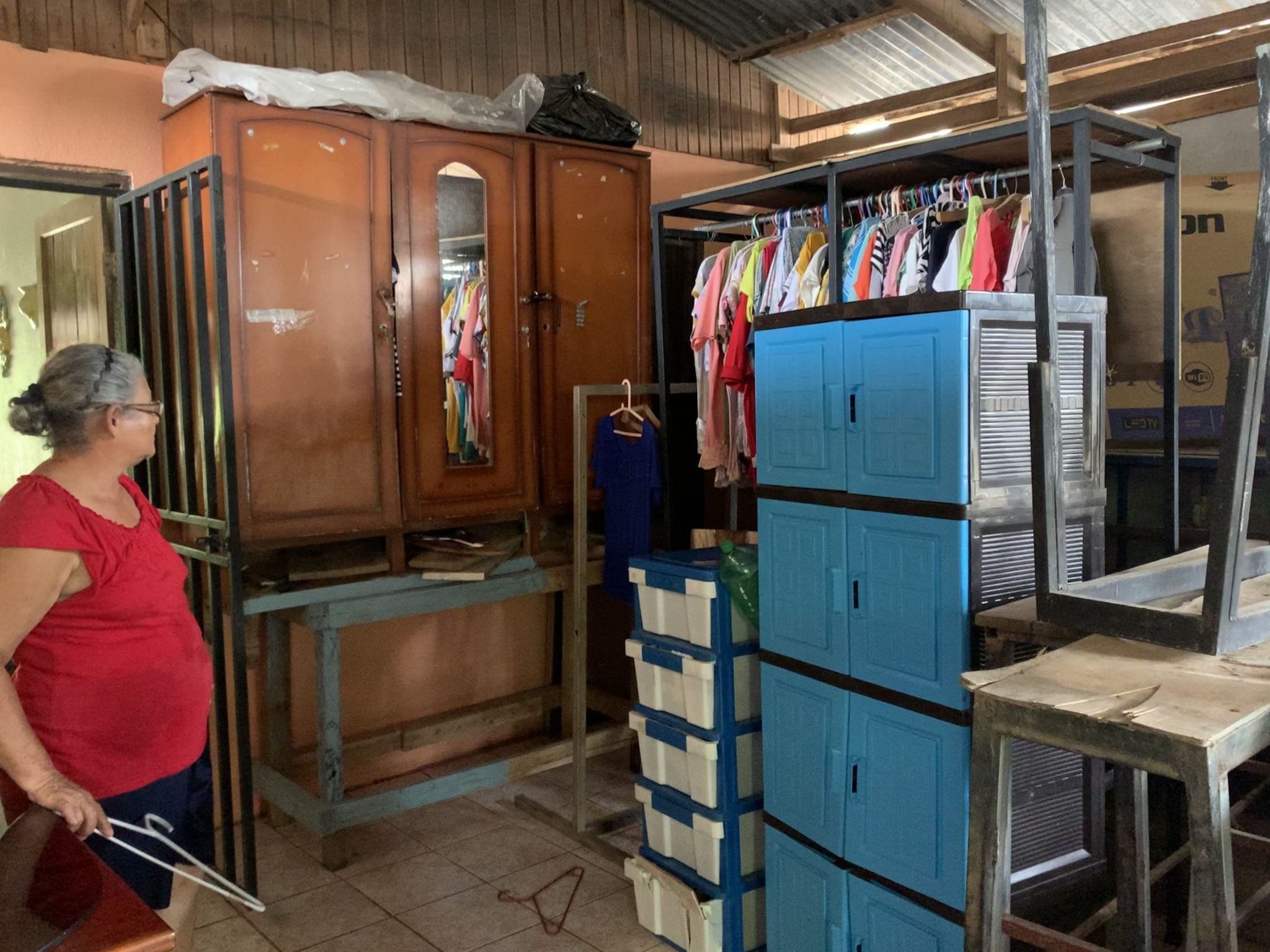
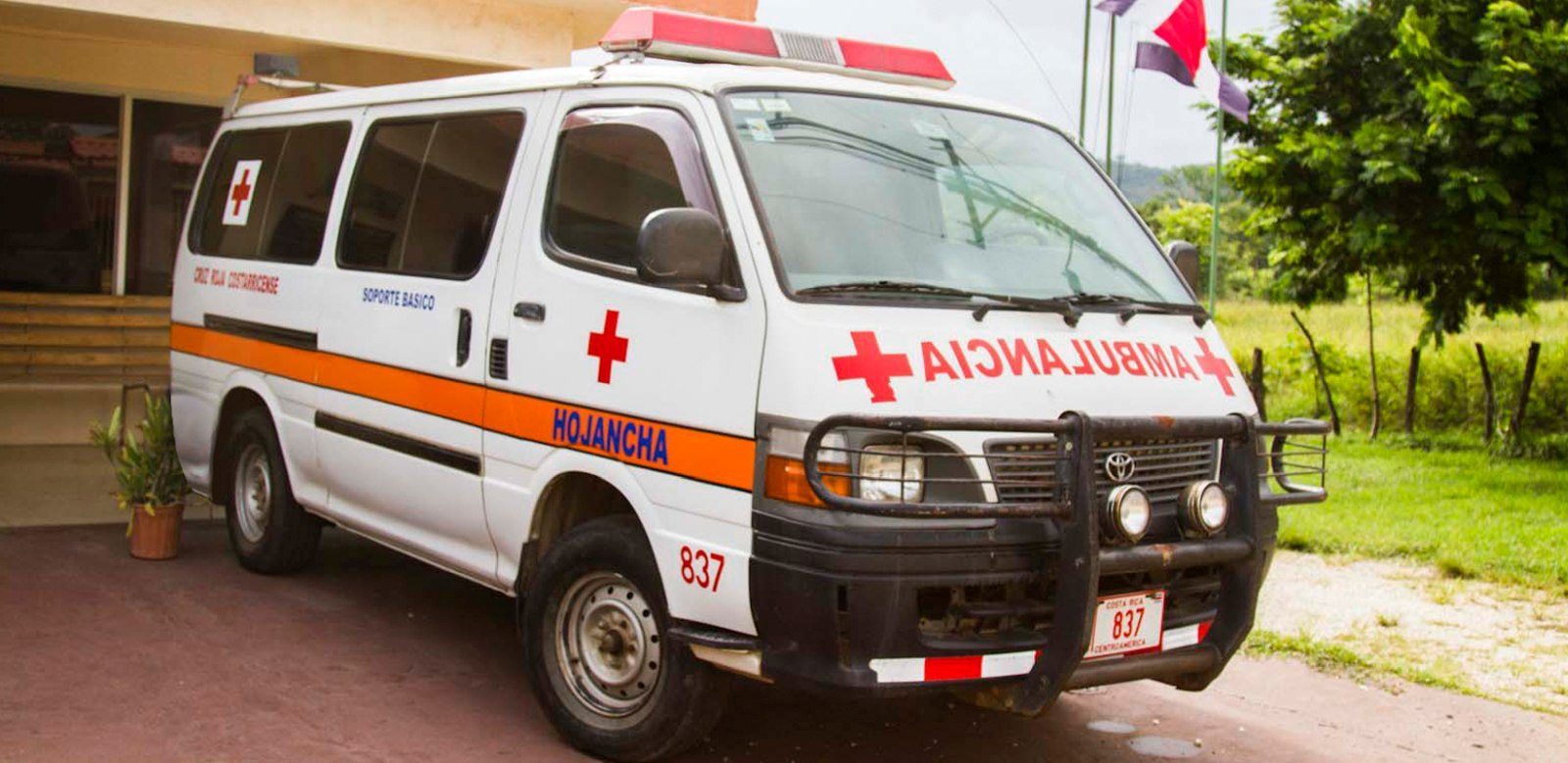
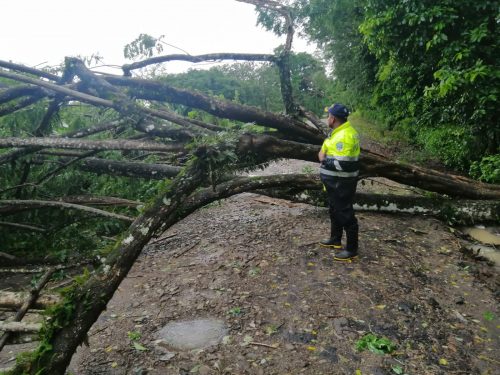
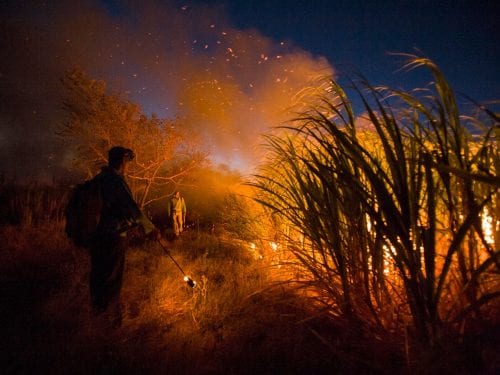

Comments